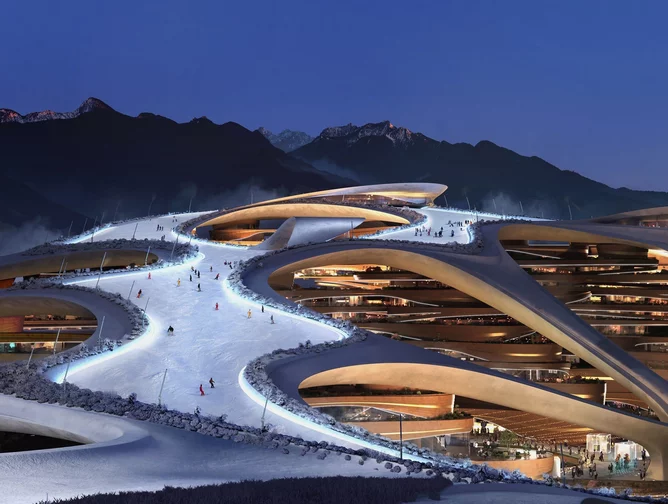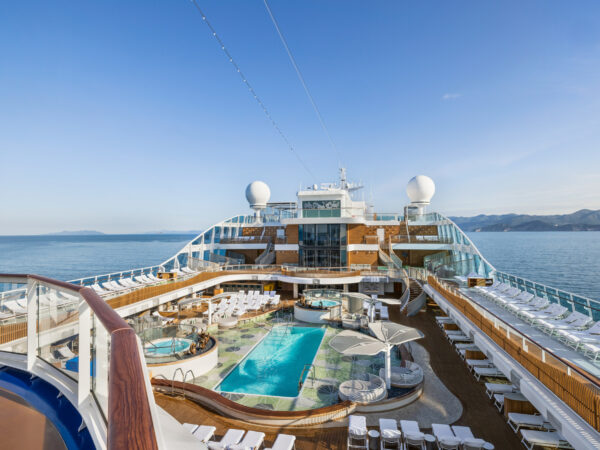Saudi Arabia is reinventing itself as a major global tourism destination, and they are doing it in a big way. Projects like Sindalah, a 7-star private island resort, Qiddiya, a futuristic city dedicated to esports and gaming, and Trojena, a space-age ski resort built above the high desert, are putting Saudi Arabia on the headlines of major publications.
Saudi Arabia’s Vision for Tourism
The Kingdom’s tourism goals seemed far-fetched when they were first announced in 2016. The goal was to attract 100 million foreign and domestic visitors yearly and grow the tourism share of the economy from about 3% to 10%, all within 14 years. However, since Saudi Arabia opened its doors to international leisure travelers in 2019, the pace at which these goals are being achieved is nothing short of astonishing.

NEOM: A $500 Billion Region Built From Scratch
Bankrolled mainly by the Kingdom’s $700 billion Public Investment Fund (PIF), the idea for NEOM, a $500 billion built-from-scratch region in northwest Saudi Arabia, was born out of Vision 2030, Saudi Arabia’s grand plan to shake off its historic reliance on oil and diversify its economy. A key pillar of this strategy involves transforming the country into a global tourism juggernaut.
In addition to the ambitious projects underway in NEOM, new hotels are springing up across the kingdom with thousands of freshly built rooms. The world’s most iconic hospitality companies – Ritz-Carlton, Four Seasons, St. Regis, Fairmont, Marriott, Hilton, Hyatt, and InterContinental – are all falling over themselves to jump into a construction pipeline that’s moving faster than anywhere else in the world.
Since Saudi Arabia opened up to international travel, its transformation speed and unapologetic approach have shocked even the most seasoned tourism analysts. The World Travel & Tourism Council (WTTC) estimates that the Kingdom has already spent $800 billion on infrastructure and foreign investments, and this figure doesn’t include the billions more being poured into these projects.
The Impact of the Pandemic on Saudi Arabia’s Tourism Plans
The pandemic delayed some of these projects, but instead of scaling back expectations, the Saudis ratcheted up their goal to 150 million annual visitors by 2030. A semantics game is at play here – in tourism parlance, a “visitor” refers to someone who visits a site within the country, while an “arrival” denotes someone who stays overnight. Euromonitor International projects that international tourists will spend $38 billion in 2030. However, adding in domestic travelers’ expenditures and the ripple effect of one million new tourism jobs, the total economic impact for Saudi Arabia could be far greater.
Preparing for the future also means acknowledging the shift in what the next generations of global travelers will want. According to data from Skift Research, younger Chinese travelers and 70% of Gen Z travelers in the UK, Australia, and India are looking to discover new destinations. Being new in the tourism industry, Saudi Arabia is in a good position to cater to these young travelers who value social impact.
There are, of course, potential pitfalls in this grand vision – enormous financial risks inherent in undertaking so many massive projects simultaneously, even for a country with deep pockets. Hotel overcapacity is another concern, which could suppress prices and diminish the luxury positioning that Saudi Arabia aims to maintain. However, Saudi Arabia’s persistent PR problem among potential travelers due to strict laws and allegations of human rights abuses remains a significant challenge.
Multinational Corporations’ Investment in Saudi Arabia’s Tourism Industry
Despite these concerns, multinational corporations continue to invest in Saudi Arabia’s grand vision for its tourism industry. For many players, human rights issues could be a complete barrier to entry. However, the majority of luxury hotel brands have already shifted their focus from China and the UAE to Saudi Arabia.
The Middle East is having a golden period in terms of international travel. The region is the fastest-growing tourism area in 2023, attracting American tourists in large numbers. While only three million Americans visited the region in 2023, that’s a massive 39% jump from 2019. The Middle East is now the only region where international tourist volume has surpassed pre-pandemic levels.
Saudi Arabia’s $800 billion tourism plan is well underway. The government’s ambitious projects and investments are transforming the country into a global tourism powerhouse. Despite potential pitfalls, Saudi Arabia is a new player in the tourism industry. However, its ability to cater to environmentally conscious young travelers bodes well for its future success.
Featured Image: Wikipedia



